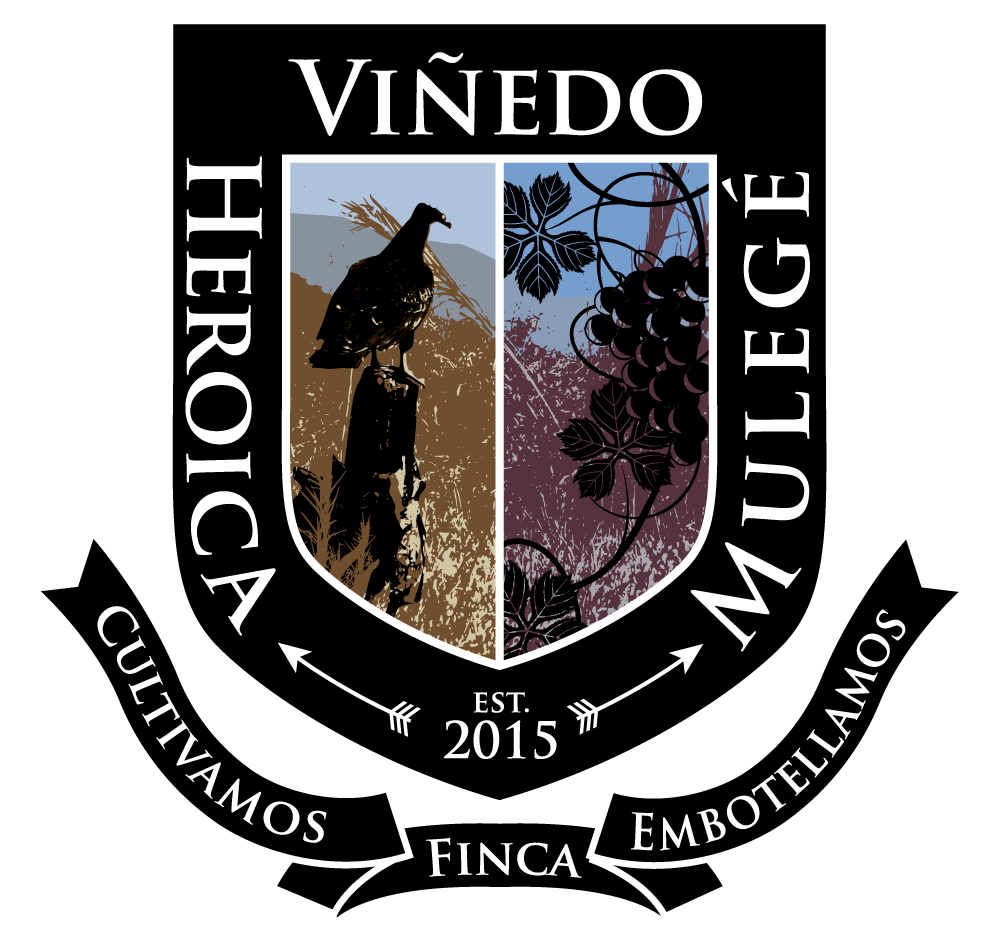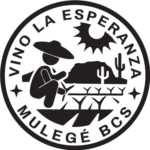Grow
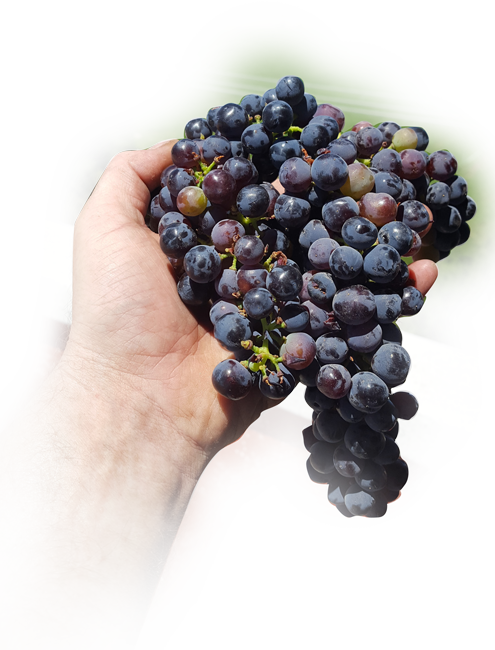
Everything we do is minimally invasive. Organic fertilization only when necessary. No insecticide or weed spray program. Only organic treatments as needed. Lots of hand labor to keep the vineyard in good shape.
In 2015, We made our first 3500 plantings of 9 European varietals. These varietals were determined mostly by chance, in Mexico sometimes you take what you can get. We trellis to a Vertical Shoot Positioning system to take advantage of our copious sunlight and cooling afternoon breezes.
We utilize a drip irrigation system to water the vines since it rarely rains here. We hope in the future that the mature vines may not need regular irrigation. After a few years of growth and production of fruit, the winners were separated from the losers and we narrowed our vineyard down to 3 varietals that were doing well.
Cabernet Sauvignon, Chenin Blanc and Sauvignon Blanc are currently being harvested and wine production is underway.
Winemaking: Minimal intervention
Red and white, sparkling and still!
Make the best wine with the least intervention. Let nature decide, a wine of the place.
Varietals and vineyard management:
First off, everything we do is minimally invasive. Organic fertilization is used only when necessary. We have no insecticide or weed spray program. Only organic treatments are utilized as needed. Lots of hand labor is required to keep the vineyard in good shape. In 2015, We made our first 3500 plantings of nine European varietals in virgin soil, we did not plow the rows to disturb what nature had perfected. These nine varietals were determined mostly by chance, in Mexico sometimes you take what you can get! We trellis to a Vertical Shoot Positioning system to take advantage of our copious sunlight and cooling afternoon breezes. We utilize a drip irrigation system to water the vines as it rarely rains here. We hope in the future that the mature vines may not need regular irrigation. After a few years of growth and production of fruit, the winners were separated from the losers and we narrowed our vineyard down to three varietals that were doing well, Cabernet Sauvignon, Chenin Blanc and Sauvignon Blanc. In 2017 we also imported two Texas bred hybrid varietals, Lomanto, a dark blue grape, and Brilliant, a pink grape. The process of getting these grapes to Mulege was a story in and of itself, ask Scott about it sometime if he’s in a good mood. Both varietals are adapted to the climate and disease pressures of the area. 2020 should see our first fruit production from these hybrid varietals. There are two other hybrid grape vine varietals that we believe would do well in our vineyard and we are currently considering adding them when they become commercially available.
Vineyard management begins in January when the vines are dormant. All of the vines are pruned individually and the cuttings from the premiere vines are saved for propagation of new vines. Bud break generally occurs at the end of February and we begin watering the first of March. In late May, the vines are thinned of excessive vegetation and fruit to enhance the quality of the final grape clusters. Mid-June signals the time to put up the nets to protect the grapes from bird and bee damage. Without the nets we experience 99% crop loss, with the nets the loss is 1%. Harvest begins in July and may extended into early August. The wines from the fifth year (2019) harvest showed great potential for sparkling white, still white, rose and still red wines. Two more years will bring vine maturity and full commercial production. We anticipate the production of 3000 bottles of wine by 2021, ramping up from there as the vines mature and we expand the vineyard. In 2020 we are planning on planting a section of the vineyard with Sauvignon Blanc in goblet form. This is a centuries old training method that limits the number of grape clusters per vine to enhance the overall fruit quality. The vines are then planted closer together to help make up some of the lost volume. The vines have indicated that they would thrive in this arrangement.
Our wine grapes are all estate grown, cared for by hand, picked and processed by hand, and minimally modified. Depending upon the juice chemistry at harvest, we may add a small amount of sulfites if it is believed it will enhance the quality of the final wines. Our processing machinery is all hand operated to ensure the gentlest handling of our prized grapes.
The white grapes are processed by a combination of whole cluster press and crushing/destemming. The juice is allowed to settle for 24 hours and then gravity fed to a fermenter. A combination of natural fermentation and cultured yeast inoculation is utilized to add structure to the wine. The wine is allowed to ferment to completion then racked off of its lees and allowed to rest for six months. Depending upon the chemistry of the final wine, we may add a touch of sweetener to ensure a well rounded mouth feel without being detectably sweet. If the wine is destined to become a sparkling product, a dosage is added and the secondary fermentation/carbonation occurs in the bottle. This technique is called Methode Naturelle and leaves a small amount of yeast debris in the base of the bottle.
Red grapes are hand picked and immediately crushed and de-stemmed, some high quality whole clusters are allowed to ferment in the must untouched. They are almost exclusively allowed to ferment naturally. We press the must at about 4 degrees Brix (percent sugar) and allow it to finish fermentation. The wine is allowed to rest for three to six months, oak chips are added to round out the flavor. We may add sulfites at bottling if it is thought to enhance the quality of the wine.
Mulege is a pretty isolated town. Getting materials here can be challenging. Because of this we have chosen to package most of our wines in pouches. The pouches are easier to get here and they offer far more protection from oxygen, heat, humidity and light than bottles and corks. Sparkling wines and Reserve wines will always be bottled. Our wines are meant to be consumed immediately. At this time we do not recommend cellaring the wines.
Drink
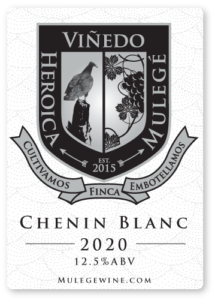
2020 Chenin Blanc
12.5% ABV
Complex, well rounded, great on it’s own or with seafood.
Chenin Blanc Details
Our flagship wine performed as usual this year, AMAZING! We harvested the grapes in late July with a sugar percentage of 21.5, a full percentage point higher than last year. The grapes were crushed and destemmed and settled for 36 hours before transfer to a PTFE fermenter. Inoculated with V1116 yeast and kept at 20 degrees Celsius the fermentation was slow and steady. Very fruity in the fermentation process.
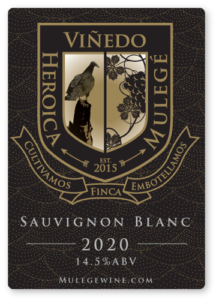
2020 Sauvignon Blanc
14.5% ABV
Characteristic smells and flavors, crisp and clean, elegant.
Sauvignon Blanc Details
We were given fifty Sauvignon Blanc vines by accident but we had a place in the vineyard for them so in the ground they went. I wish I had more accidents like this! These vines love it here. With a sugar percentage of 24.5 percent, this wine has some punch to it under the clean and elegant lavender tones. Hand picked and whole cluster pressed, the resulting must was very clean and fruity. Fermented in PTFE after inoculation with X16. Great performer in the winery. Unfortunately there’s only a few cases of it. That problem will change soon. We like these grapes so much that we planted 700 more in the winter of 2020. In a few years we’ll have a lot more to go around.
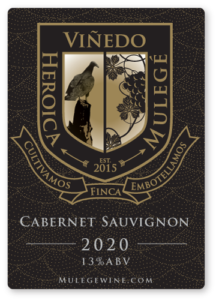
2020 Cabernet Sauvignon
13% ABV
Fruity, dark, and fun!
Cabernet Sauvignon Details
Finally! After waiting six years for vine maturity and dealing with last year’s bird loss, we got nets up on the Cab this year and were able to get our first harvest. The birds still got about 10% of the grapes, but we got more than they did. Harvested in mid-August, the grapes were hand picked and sorted to remove any individual grapes that weren’t up to standard. The whole clusters were placed in fermenters and put through carbonic maceration at 30-35 degrees Celsius. This technique draws out great fruit flavors and allows an earlier release than more traditional vinification techniques. Inoculated with BM 4×4 yeast to finish fermentation in PTFE. We can’t wait to get this one in the bottles and bags to share with you.
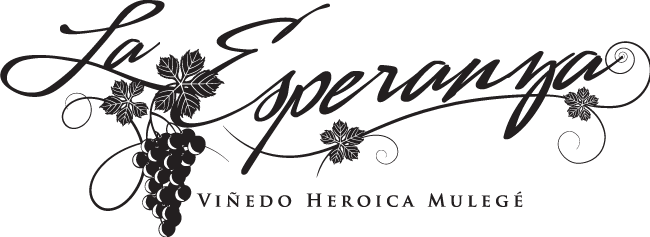
2020 La Esperanza Besito
9.5% ABV
Complex, fruity, interesting.
Besito Details
People often ask what we do with the grape skins after pressing. This year the Chenin Blanc juice was so flavorful and complex that we decided to make a piquette. This age old technique utilizes the remaining sugar and flavors in the grape skins, combined with some added sugar and water, to create a unique and tasty beverage. Inoculated with X16 and fermented in PTFE. Although somewhat less flavorful than the namesake wine, this beverage has a very different flavor profile and complexity due to maceration on the skins with 4 daily punchdowns for 5 days. Normally white wine is made from juice with little to no skin contact. The end result? You decide. Is it a soft little kiss, or something else entirely?
2020 La Esperanza
Jamaica Me Loco
6% ABV
The color of this stuff is unreal, subtle, tender and satisfying.
Jamaica Me Loco Details
Inspired by our winemaker friend Harold Osborne from Todos Santos, we decided to make a beverage with something other than grapes, hibiscus flowers (aka jamaica in Mexico.) The flowers were steeped in a mixture of water and sugar and fermented with V1118 yeast. The taste is amazing, soft and subtle but assertive. At 6% ABV, this can be an early afternoon sipper for sure. Also goes very well with a splash of mineral water and a squeeze of orange juice. We’ve got great oranges in Mulege! A few glasses of this stuff and you might find yourself a little bit on the crazy side, in a good way of course.
Stay with us!
Our Hotelito has 3 available rooms with adjustable accomodations for you and your family or friends. Enjoy the serenity of the valley with all of our amenities and the charm of our working vineyard.
Hotelito
Relax poolside in one of our 3 newly built rooms with all the comforts of home -
The View's aren't bad either~
Short Stay
Passing through Mulegé?
Need a place to stay?
Send us an e-mail:
info@mulegewine.com
or give us a call for availablity
+52 613-125-5910
Extended Stay
![]() Extended Stay
Extended Stay
(3+ Nights)
Play
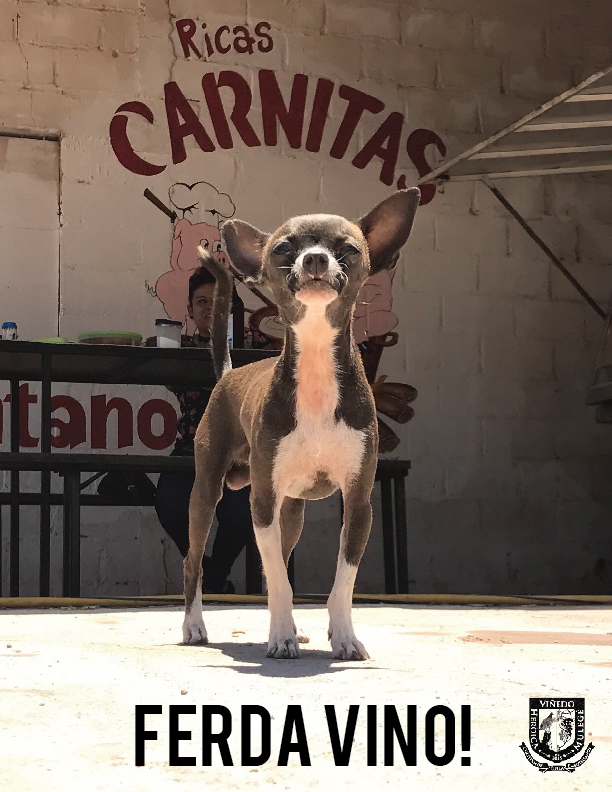
Activities
Wine tasting
Cave paintings, mountains
Horseback riding
Fishing
Mission de Santa Rosalia
Museo de Mulege
Beaches
Bahia de Conception
Santispac
Coyote
Santa Inez
Punta Chivato
Boat tours
Whale sharks
Scuba/snorkeling
Sport Fishing
Paddle boarding
Events:
New Year’s in the town square
Chili cook-off
Pig races
Fishing derby
Duck races
Art show
Baja 1000 (course dependent)
Out of town trips
Santa Rosalia: Shopping, Iglesia de Santa Barbara (Eiffel designed church) and lunch
San Ignacio Bay: Breakfast, lunch and the best whale watching anywhere
Scorpion Bay: Overnight surfing and Baja 4×4

